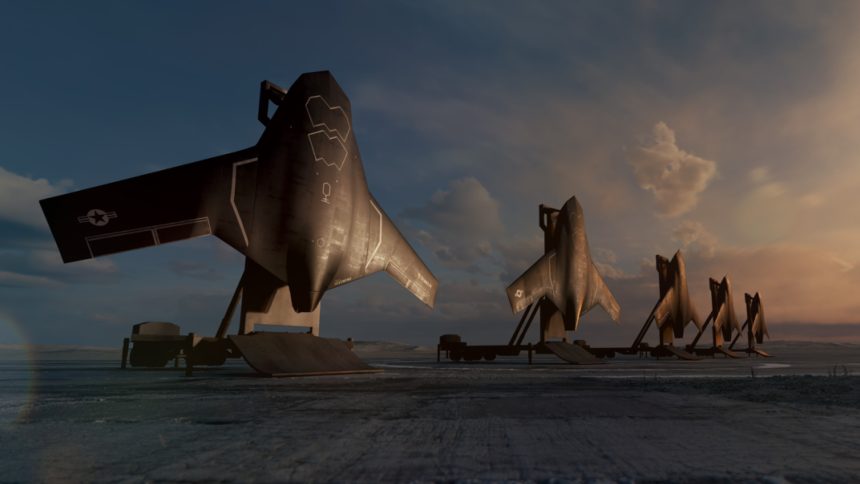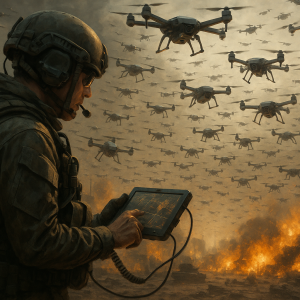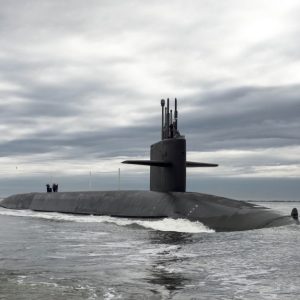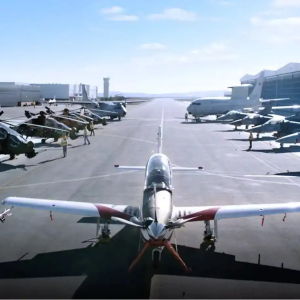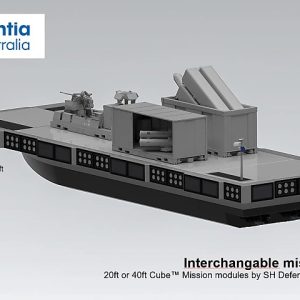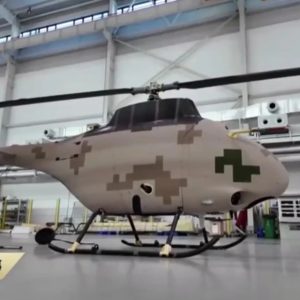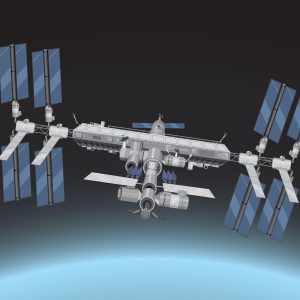Shield AI has unveiled X‑BAT, an AI‑piloted, vertical take‑off and landing (VTOL) stealth jet. The aircraft is built for runway‑independent airpower. The reveal took place in Washington, D.C., on 21 October 2025. X‑BAT pairs a fighter‑class afterburning engine with Hivemind autonomy. It also uses a trailer‑based vertical launch and recovery system. Consequently, forces can project airpower from ships, islands, and austere sites where runways are vulnerable. In short, airpower without runways aims to extend reach, raise survivability, and sustain tempo at 2,000+ nm.
Key Facts
- Reveal: 21 October 2025, Washington, D.C.
- Class/size: Group 5 UAS; ~26 ft length, 39 ft wingspan
- Performance: >50,000 ft ceiling; >2,000 nm range; supersonic objective
- Propulsion: F‑16‑class, afterburning engine; 3‑D thrust‑vectoring nozzle heritage
- Basing: Trailer‑launched, trailer‑recovered VTOL; plan for five launch trailers per aircraft
- Payloads: Internal bay (≥2 weapons) + external hardpoints; AAMs shown in renders
- Autonomy: Hivemind AI pilot for comms/GPS‑denied operations
- Roadmap: VTOL flight tests fall 2026; operational validation 2028
Context and the New Development
Shield AI frames X‑BAT as a runway‑independent ‘strike jet’. It can deploy from a truck trailer, a naval deck, or a remote island strip. The tailless, low‑observable planform includes folding wings for compact transport. Launch and recovery occur vertically on a rail. After take‑off, the jet transitions to wing‑borne flight. It then returns for tail‑down vertical recovery. Notably, the company’s dimensions point to a large Collaborative Combat Aircraft (CCA)‑class platform. This aligns with Group 5 payload and range goals [1–4].
Architecture: Fighter‑Class Propulsion Meets VTOL
X‑BAT is designed around an afterburning, F‑16‑class engine (GE F110 or Pratt & Whitney F100 family). It is paired with a 3‑D thrust‑vectoring nozzle with roots in 1990s demonstrators (F‑15 ACTIVE / F‑16 MATV). The vectoring approach widens the controllability envelope for vertical launch and recovery. It also supports high‑alpha manoeuvre. Meanwhile, the layout seeks to keep a clean, low‑observable aft‑body in cruise. Company officials signal a supersonic performance aim. In addition, the plan calls for five mobile launch trailers per aircraft to enable dispersed VTOL basing [2–4].
Weapons Bay and Mission Sets
Renders show an internal bay sized for at least two weapons (examples: AIM‑120, AIM‑174B). There are also external hardpoints for modular payloads. As a result, mission roles span long‑range strike, counter‑air, ISR, and electronic warfare. Internal carriage helps control signature for first‑day survivability. By contrast, external stations add flexibility for pods, decoys, and expendables [1,3–4].
Autonomy: Hivemind in Comms/GPS‑Denied Space
At the core sits Hivemind, the company’s autonomous flight and teaming stack. It has been demonstrated on several platforms (for example, V‑BAT teams, Avenger, and F‑16/VISTA). Hivemind is tuned for degraded, denied, and intermittent communications. Therefore, it enables collaborative tactics with crewed aircraft or independent target prosecution when links are jammed. The X‑BAT concept leans on Hivemind to manage launch and recovery, high‑workload transitions, and mission‑level decision‑making at range [2,5–6].
Programme and Schedule
Shield AI targets initial VTOL flight tests in fall 2026. It then plans all‑up mission testing and operational validation in 2028. Pricing guidance tracks “similar to CCA peers.” Industry estimates place the unit cost around ~$30 million per airframe. Furthermore, the firm expects to announce production and engine partners in due course. The strategy is to compress time‑to‑field by blending digital engineering with an open‑architecture autonomy stack [3–4,7].
Technical and Operational Effects
- Austere basing: Trailer VTOL with five launchers per aircraft enables rapid distributed operations (DiOPs). It also gives ship‑to‑objective flexibility for maritime and littoral campaigns.
- Survivability: Low‑observable shaping, internal carriage, and VTOL dispersal make runway attacks and fixed‑infrastructure targeting less effective.
- Mass and tempo: A Group 5 airframe with >2,000 nm reach and autonomous teaming extends range and magazines for crewed formations.
- EW and sensing: Pairing with next‑generation EW pods and off‑board sensors supports counter‑air and kill‑chain closure in high‑threat IADS. See our L3Harris Viper Shield overview for how podded EW opens survivability corridors.
Procurement and Industrial Questions
X‑BAT occupies a high‑end CCA niche. It competes with exquisite yet subsonic loyal‑wingman concepts. Thus, buyers will ask about unit cost vs. capability, shipboard certification, weapons integration (AIM‑120/‑174B and stand‑off strike), and trailer logistics across services and allies. Near‑term milestones include engine/vendor down‑selects, shipboard concept‑of‑operations trials, and DT/OT entry aligned with USAF CCA increments [3–4,7].
Assessment: Risks and Counter‑Arguments
- Propulsion integration risk: Vectoring nozzles and vertical recovery impose thermal and structural loads that differ from conventional CCAs. Cooling, shielding, and fatigue life will shape sustainment cost.
- Shipboard operations: Tail‑first vertical recovery on a pitching deck is demanding. Certification schedules could extend.
- Signature vs. VTOL: VTOL hardware and seams may penalise RCS. Therefore, edge alignment around the nozzle and launch interface will be critical.
- Autonomy assurance: Mission autonomy in a contested EM spectrum faces certification and policy hurdles. Rules of engagement and guardrails will influence early use.
Implications and Next Steps
Watch for 2026 VTOL test footage, engine partner disclosure, and USAF/Navy CCA tie‑ins. For allies with contested basing, the idea of airpower without runways is attractive. It offers persistent, dispersed combat aviation without the cost or politics of new runways. Expect early maritime demonstrations and expeditionary island trials as the programme moves toward 2028 operational validation [3–4,7].
Further Reading
- Internal — Electronic warfare pods for survivability: L3Harris Viper Shield overview
https://defenceagenda.com/viper-shield-pod-ew-system-l3harris-seoul-adex-2025/ - Internal — Autonomous naval operations and swarming: Analysis of autonomous maritime vessels and combat roles
https://defenceagenda.com/autonomous-maritime-vessels/ - External — The Aviationist: Unveil report, dimensions, weapons bay visuals
https://theaviationist.com/2025/10/22/shield-ai-unveils-x-bat/ - External — Aviation Week: Engine/nozzle details; 2026/2028 test roadmap
https://aviationweek.com/defense/aircraft-propulsion/shield-ai-unveils-high-end-vtol-collaborative-combat-aircraft
References
[1] The Aviationist, Shield AI Unveils X‑BAT VTOL Stealth Drone
https://theaviationist.com/2025/10/22/shield-ai-unveils-x-bat/
[2] Shield AI (Press/Overview), X‑BAT — AI‑Piloted VTOL Fighter Jet
https://shield.ai/x-bat/
Press release
[3] Breaking Defense, Shield AI unveils X‑BAT, a VTOL stealth loyal‑wingman drone
https://breakingdefense.com/2025/10/shieldai-drone-fighter-xbat-revealed/
[4] Aviation Week, Shield AI Unveils High‑End, VTOL Collaborative Combat Aircraft
https://aviationweek.com/defense/aircraft-propulsion/shield-ai-unveils-high-end-vtol-collaborative-combat-aircraft
[5] DefenseScoop, Shield AI reveals VTOL autonomous fighter jet dubbed X‑BAT
https://defensescoop.com/2025/10/22/shield-ai-vtol-autonomous-fighter-jet-x-bat/
[6] Shield AI, Hivemind — autonomy in comms/GPS‑denied environments
https://shield.ai/revolutionizing-v-bat-operations-navigating-autonomy-in-single-and-team-missions/
[7] The War Zone, The Rise of X‑BAT
https://www.twz.com/air/the-rise-of-x-bat

